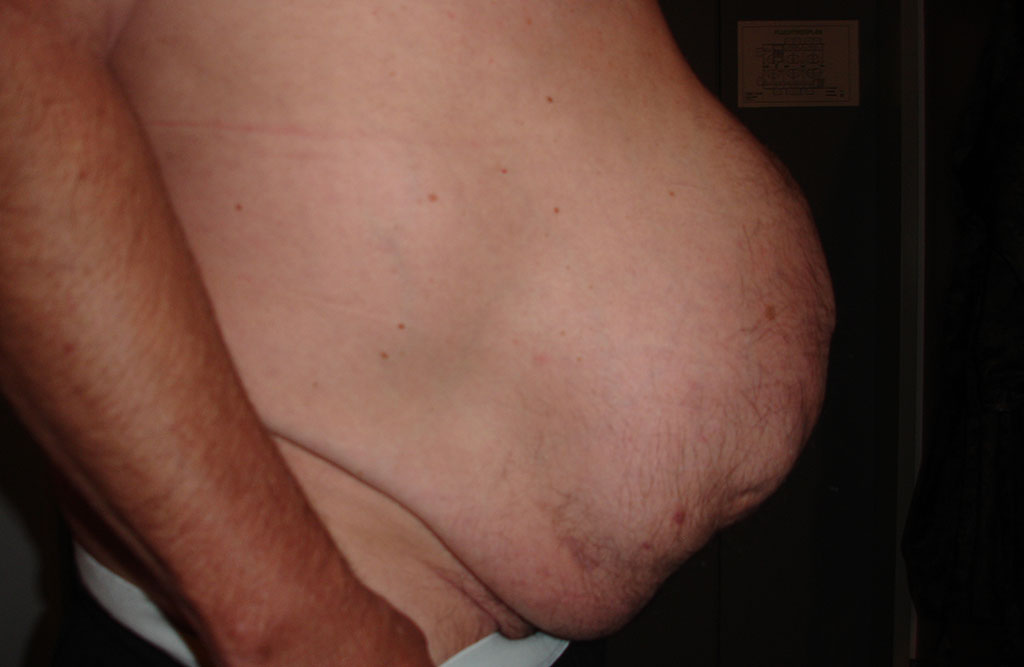Scar hernia
Scar hernias can develop by nearly half of all patients who have undergone major abdominal surgery. Common causes are poor wound healing due to infection or physical exertion too soon after surgery; other factors include chronically elevated pressure in the abdomen and obesity, but also poor nutrition and general condition. Scar hernias appear as abnormal protrusions of the abdominal wall.
With any hernia, there is the danger that loops of intestine can become trapped (incarcerated). This is very painful and immediate surgery is necessary to prevent permanent damage to the trapped intestinal tissue.
Surgery for a scar hernias can be conventional or laparoscopic (buttonhole surgery). It has been shown that with larger hernias, recurrences are less likely if the abdominal wall is reinforced with a synthetic mesh, which can be applied with either surgical technique. Laparoscopic treatment offers advantages over open surgery: The recurrence rate can be decreased from some 15% to 7%, and as it does not require any large incisions, postoperative infections are less frequent and there is less pain. With some five days, hospitalization is shorter than with conventional surgery and the patient can resume everyday activities including work sooner, although physical activity will be limited for a variable period, depending on the location and size of the hernia. Noncompetitive sports can be resumed soon after the wound has healed.


